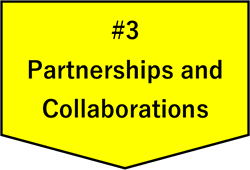INVITING APPLICATIONS
14th SSF EXCELLENCE AWARDS & RECOGNITION – 2025
LAST DATE: JUL-25 | APPLY NOW
“When the winds of change blow, leaders have two options: either build walls or build windmills”, says an ancient proverb. Either way, they would be right, but the trajectories of their decisions on the future become quite different.
In this VUCA world, the leadership game is a high-contact sport, as leaders guide their teams over choppy business waters to successful outcomes. Competition has heightened, the business boundaries have blurred, customers are excessively demanding and talent less loyal. Winning this business game needs a multi-front approach – anticipatory planning through imagined scenarios of a variety of outcomes, multi-skilling resources to be both generalists and specialists, adaptable ways to motivate a range of team behaviors, and balancing the short-and long-term views.
In this VUCA world, the leadership game is a high-contact sport, as leaders guide their teams over choppy business waters to successful outcomes. Competition has heightened, the business boundaries have blurred, customers are excessively demanding and talent less loyal. Winning this business game needs a multi-front approach – anticipatory planning through imagined scenarios of a variety of outcomes, multi-skilling resources to be both generalists and specialists, adaptable ways to motivate a range of team behaviors, and balancing the short-and long-term views.
The following commentary provides an erstwhile practitioner's and a current CEO consigliere's point of view about the things that leaders of shared services centres can consider rebooting from a People, Process & Technology standpoint, to bubble their companies up the leadership curve. The chosen lens is a wide-angled one that covers aspects of the importance of leadership and the future of work in the context of shared services.
Leaders will be compelled to deal with the challenges and opportunities because of the Covid-19 pandemic. They will also have opportunities to build or change their organizations, with the latent mood for transformation also brought to the fore in these times.
The Need forAction
The impact of the current pandemic Covid-19 has been far-reaching, affecting every business in every industry across the world. It has cast a pall of gloom on the economic climate and business sentiment across several consumer markets. Unlike software viruses, which could find artificially designed antidotes, this one affects humankind, creating significant concerns about lives and livelihoods.
Global businesses and the services dependent upon them have all had to deal with unprecedented risks and challenges of business disruption overnight. The underlying factors weredrying up of consumer demand and lockdown forcing employees from showing up at work.Therefore, work-from-home became a necessity as governments across the world enforced lockdown to ensure social distancing and containment of the transmission of the virus. This situation led to a scramble among the Boards and leaders in companies to find strategies for the short-term, medium-term and long-term to manage, survive and thrive in this and similar crises in the future.
Clearly a transformation is expected when rebooting, rethinking and redesigning everything in an enterprise. The benefit is a complete re-alignment of the operational components such as processes, systems & practices, business continuity plans, human resources policies, etc. with the organization's purpose, culture, strategy and vision. This rethink and redesign exercise should leave the organization more robust and agile in the longer-term.
Leadership Gets Critical
The current crisis due to the Covid-19 pandemicis likely to bring back the distinction between managing and leading. Managing is about doing things right; Leading is about doing the right things. We often overlook this distinction, or it remains blurred.
Due to its very nature, the shared services world typically relies on principles of ‘managing’ to deliver on its objectives and goals. There is a deep focus on performance and accomplishment of day-to-day activities.
Maybe it is time to focus on ‘leading’. The current situation we find ourselves in provides several opportunities for a reboot, rethink and redesign in our leadership as well.
Some of the critical dimensions in the context of SSCs are discussed below.
The advent of the Covid-19 pandemic was a defining moment in people’s lives. Just when one had got to massive, gleaming campuses and cubicle farms, and thought we had seen it all in terms of modern office setup, Covid-19 walked in and began to change everything. The office stayed where it was butremained unoccupied. Homes became the new offices.
Even if employees were to return to offices, it will never be the same. First, there will be marked territories on floors, reminding them of the continued need for social distancing. Then, smart Apps will report who they have been in touch with. Team huddles will become rare. Only select employees carrying out mission-critical tasks will need to physically show up at work. Others, not being asked to report to office but work from home, will have mixed feelings- one of comfort, safety and avoiding a possible painful commute, and the other of fear and paranoia- being seen as less essential and therefore prone to be dispensed with.
Management teams are already in a huddle, framing new rules of work, even as employees start trickling back to the office. The administrative burden is humungous. If essential staff must work from offices, companies will have to adhere to strict protocols. These include screening each employee with thermal scanners every day, compulsory use of face masks, maintaining physical distancing in workspace and, most significantly, surveillance of building entrance, cafeteria, workspace through CCTV for security and physical distancing. All the above has dramatically increased the costs of oversight of employee management at work.
Taylorian principles drove the design of modern-day offices of large floor plates and desks stacked one behind another in neat rows and columns, easy for the supervision of workers by a strict supervisor. This industrial office design gave way to the cubicles-rich office, where workers strived, although sitting in proximity in partitioned lots. These ‘little’ offices provided employees their privacy to deliver customer service. About three decades ago, companies experimented with the idea of open offices, suggestive of flat hierarchy and high collaboration, which had a reasonably long reign. Now, driven by recent research that open offices encourage high levels of distractions and are,in fact, taboo given the need for social distancing, office design is coming up for a severe re-look.
The offices of shared services centres, back-offices and BPOs were built on the principles of optimizing the floors for agent density. Now, restructuring offices mean the redesigning of the floor plan, air-conditioning systems and lighting - involving huge costs. Social distancing will demand the exact opposite principles of floor layouts. These new norms will drive product prices up and may force SSCs to place only mission-critical or high value jobs in these centres.
So where are we headed? Some companies have announced very bold and disruptive moves, such as Tata Consultancy Services (TCS). They estimate that they could be 100% productive with about 25% of their workforce in offices. In five years, almost three-quarters of its substantial workforce of nearly half a million would work from home. The jury is still out there about permanent strategies about the workplace. Some companies feel that collaboration and camaraderie among employees have increased despite their connections being digital only. Other employees still feel it necessary to go to an office for work, since it is their additional space where they can focus entirely on work.
Like all decisions, the WFH strategy will permanently alter the nature of work, the level of interaction that young employees particularly find at work and the change in the psychographics of employees as they balance work-from-home with work-at-home.
Leaders will have to deal with the unintended consequences of their decisions and own up to these as part of their legacy.They will be forced to take the highs with the lows.
The postCovid-19 pandemic world looks unclear.For global business services (GBSs) and shared services organizations (SSCs), there is a significant opportunity to question the status quo of everything.Organizations traditionally believed that physical proximity was critical to getting many processes, particularly more complex ones, done effectively. Through Covid-19, many have learned that "in-person oversight" does not matter much. Several GBS and SSC leaders believe their operations, including highly complex processes, continue to perform well after moving to work-from-home. WFH or virtual will likely be elevated as a service delivery model and may no longer be optional. It is anticipated that organizations may see one-third or more of their labour force working from home in the future, compared with just one-tenth before the pandemic. This significantly impacts organization structures or the roles of middlemanagement to provide guidance and oversight. As individual team members get self-organized and empowered, the team leader will now be forced to think of other ways to create value or step out. The leadership opportunity here is to re-strategize about how teams deliver work and activities that could be consolidated or eliminated through automation.
A notable myth that came to the fore was the belief that merely having a business continuity plan (BCP) was sufficient to meet the company's needs. The Covid-19 pandemic is an incident of unprecedented scale and revealed that many existing BCPs were not adequately prepared or robust enough. Typically, BCPs assumed that if an office or a city was to shut down, work could shift to an alternate location. Many of those plans fell short during the pandemic-driven service centre closures, given the slew of lockdowns - one city after another. WFH and virtual work seemed to have been marginally included in a few BCPs that were a part of the set of customers who said their plans were valid during the outbreak.
This should set organizations thinking about moving work fungibly across the world, to centres that are de-risked or less affected. It will need the creation of some foundational capabilities across work sites to ensure that talent is available and of networking these nodes of work even more.
The Covid-19 outbreak seems to have moved the dial on this one. Almost all organizations have experimented with advanced digital tools and cloud platforms, but have been slow to adopt and migrate to these solutions, based in part, on a long-held belief that these are "nice-to-have" and not "must-have". Due to the need to have an expansive network during the WFH scenario, legacy systems generally witnessed increased access issues and data security risks.
The organizations that were slower to change or modernize, such as being reliant on manual or paper-based activities as a part of end-to-end processes, saw the most significant challenges in moving to WFH solutions. The introduction of new technologies such as robotic process automation will also eliminate low-value work. Now may be the time.
This one is the belief that data security works best fora centralized, concentrated workforce. The pandemic drove WFH as a real work option for a large part of the workforce. The challenge, therefore, remains managing security and data protection and associated risks from distributed work.
WFH access calls for new security architecture and solutions. Some possible short-term technology solutions include enabling the ability to lock down an employee's computer remotely, camera recognition on devices to prevent picture-taking by onlookers, voice recognition for customers, privacy screens, and several other solutions. Some companies are also asking employees to sign NDAs that specifically require them to not show screens and data to others in their surroundings.
Great leaders put a stake in the ground; develop a clear and shared vision for the organization; and consistently pursue that vision. Building a strategic plan to define the journey towards thatvision is essential. Tweaking the plan to deal with contingencies on the choppy waters of a VUCA world is equally crucial. Leaders ensure that they are building the organization towards the next step. For SSC leaders gaining executive support is vital – to be included as a strategic asset in the organization. Leaders are, therefore, more proactive and less reactive.
The strategic plan can be simple or complex. Without being widely shared or even documented, it is always on the mind of the shared services leaders. The most effective leaders can use their plans to steer change, staying a step ahead of the decision curve and thereby providing value to the company.
The Forces of Change
Let's step back for a moment to understand the current paradigm of aprocess-oriented world of work. The waves of first mechanization, then industrialization and finally computerization created our modern world. Manufacturing mindset was applied quite seamlessly to service companies. In Industry 4.0, everything could fundamentally change- the nature of work, the workforce and the workplace.
From herein now, changes in the business environment are likely to be rapid and multidimensional. Three basic changes will force the shared service leaders to re-write a new approach for a brave, new world.

It was as recent as 70 years ago when people would go to the mainframe computing machines situated at a central location to get their computer jobs processed. Later, talent flowed to large corporate campuses, driven by the concept of centralization of work and for co-ordination driven by physical proximity. Triggered by the pandemic, work will now go where the people are. As work gets atomized, driven by a desire both by the employers and employees for a WFH format, it will bring changes just like the democratization of computing through the advent of the personal computer. Companies that flourish will be able to assemble workforces across geographically distant centres to deliver work to customers. A whole bunch of emergent technologies exist that can get work farmed out to anywhere in the world, where great talent can solve problems at attractive prices in a project mode. A gig economy based on individuals will further catalyze this as talent trades off stability for creativity and freedom.

The pandemic has triggered a massive, simultaneous hunt by several pharma companies, research labs, biotechnology companies and other creative teams around the world to look for both a vaccine as well as a cure for Covid – by collapsing the innovation cycle by 10x, if not more. That is the way innovator companies work- through long and risky cycles of innovation.
Service companies have begun to follow the same path. Corporate SSCs are becoming the sandboxes in which such innovationsare flourishing.
Processes are being studied for shrinkage and ‘take outs’ using tools such as time-and-motion, six sigma and lean. Over relatively short periods of time, process transformations are taking place giving the organization the advantage of both agility and competitive edge.

Traditionally, firms operated with a bunch of partners in their supply-chain ecosystem. The new world of work will need collaborative partnerships as new dimensions of the human-computer interactions unfold. Computer based intelligence systems could well be replacing many facets of partnership. A newly created inter-relationship may be the defining culture of the future. This may require a partnership and collaboration at a “peer” level. Automated systems are not likely to remain “smart” only to the extent of rules-based work or for low-levels of customer experience management. Such systems are easily capable to out think humans and so will have to be deployed for tasks that require large and complex logic grids.
Conclusion
The current trends suggest that the physical and virtual worlds of work will collide and coalesce more than ever before, accelerated by technology. This situation may lead to short-term challenges but will prove to be of significant advantage in the long-term for firms willing to transform and change.
ABOUT THE AUTHOR

Sachdev Ramakrishna is Co-Founder ofa ground-floor healthcare internet start-up aiming to assist patients of complex diseases with accurate medical diagnoses and treatment planning. He also assists CXOs in becoming better leaders.
Sachdev Ramakrishna was till recently the Chief Marketing Officer at Tata Business Support Services. He has earlier worked at Steria, MphasiS, Dr Reddy’s, Piramal Enterprises, AF Ferguson and Larsen & Toubro Ltd. He is a Fellow of the Royal Society of Arts, UK. He has been a Charter Member of TiE, New Delhi, an India Board Member of Chief Marketing Officers Council, US and a patron of several prestigious museums abroad.
Sachdev has two degrees in Chemical Engineering, including a Masters from IIT Madras at Chennai, India, and an MBA from the Asian Institute of Management, Manila, the Philippines, where he was an Asian Development Bank scholar.



 Ask an Expert
Ask an Expert



